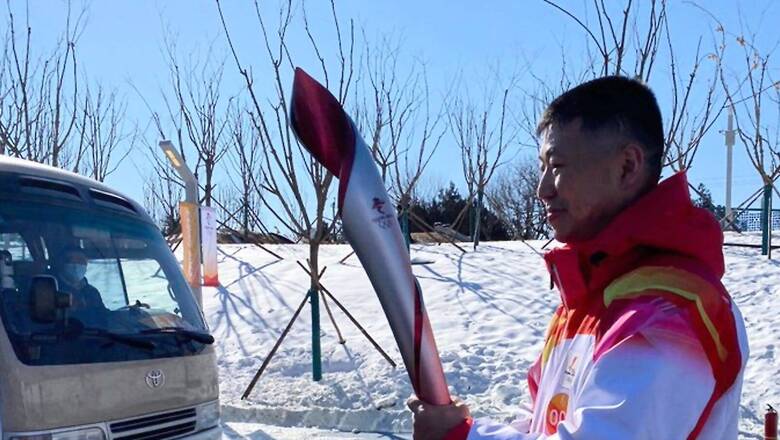
views
On one hand, China’s ability to subvert global systems is unparalleled. On the other, its public diplomacy is more often than not cringe-inducing. The latest episode of this cringe is China’s use of Qi Fabao, a regimental commander from the Xinjiang military command deployed in Galwan who apparently sustained head injuries in the Galwan clashes, to become the torchbearer at the 2022 Winter Olympics being held in Beijing. This highlights a fundamental dichotomy: on one hand, China didn’t want to talk about its casualties and carried out their funerals in absolute secrecy, fundamentally disrespecting their war dead, instead of acknowledging their valour. On the other hand, they are now showcasing a soldier from that very clash, which will mean nothing to most participants of the Winter Olympics but will rile up all its neighbouring states that participate and that have territorial disputes with China. The question is what did China want to achieve and what did it end up achieving by this statement?
The first aspect is that some families in China — possibly as low as 16 but possibly as high as 96 with 48-64 being a more likely range — will finally get some acknowledgement of the sacrifice of their family members. On the other hand, they are just as likely to feel tremendously insulted that their individual sacrifices were not acknowledged and instead just one member of the People’s Liberation Army (PLA) cornered the glory.
During the Galwan clashes, China did everything it could to cover up actual footage and reporting or even speculation on numbers of dead, specific causes of the clashes or indeed any cost-benefit analysis of what was achieved. Yet within a year, it started a systematic campaign of selective video leaks (all of which have been proven to be at least 2-3 kilometre, if not more, inside the Chinese side of the Line of Control) including flag hoisting with soaring music and beautifully manicured soldiers. The question is why is every single one of these videos being passed off as from the site of the Galwan clashes, when in fact they are quite far from it?
Part of this would be to stir up a debate in the Indian media, which is always extremely keen on picking up whatever few crumbs they can, to validate their now completely discredited coverage and analysis of what exactly happened. But the average Chinese, including think-tanks and government officials I’ve spoken to, seems quite flummoxed as to what is happening and what they’re meant to do. Before Xi Jinping’s all-pervasive crackdown, these same people enjoyed a certain level of freedom to take any line that validated or criticised Chinese policies (within limits, of course). But since Xi Jinping took over, they have to measure every single line they write or utter, because any deviation from the party line can have disastrous consequences. The problem is that right now, they don’t know what to do, as a renewed debate on casualties and benefits of the Galwan clash could go either way and they could end up scapegoated.
For China’s neighbours though, the message is unambiguous: That the use of lethal force by Beijing, to consolidate its territorial claims, is back on the table, marking the end of the “peaceful rise of China” propaganda. Not only that, but China will use every international event that showcases China to push home its territorial claims, and legitimise the violence.
Of course, this isn’t the only time China has used sports for politics. Across the world, sports has been deeply intertwined with politics in democracies and dictatorships alike, but even the 1936 Berlin Olympics (where the torch lighting and relay ceremony started) didn’t showcase territorial and geopolitical ambitions as specifically as the Beijing Winter Olympics have (and the games have not even started yet).
The question for the rest of the world is, will it turn a blind eye? More specifically, should we expect the world to do anything, when India, the victim in this case, continues to participate in the Winter Olympics?
The writer is a senior fellow at the Institute of Peace and Conflict Studies. The views expressed in this article are those of the author and do not represent the stand of this publication.
Read all the Latest Opinions here


















Comments
0 comment